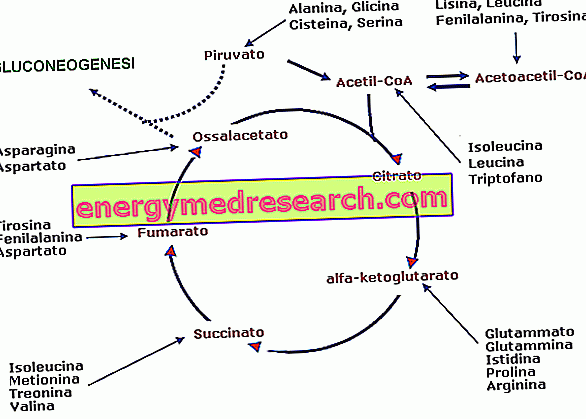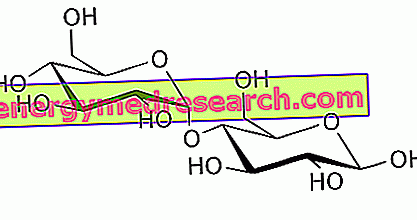The primary function of amino acids is to participate in protein synthesis, a biological process that leads to the formation of proteins necessary to support different functions of the body. Each protein, in fact, consists of a variable number of amino acids (indicatively from 50 to 2000).
In relation to their function, proteins can be classified into: regulators (enzymes, peptide hormones), structural (collagen and elastin), contractiles (muscle proteins), transport (such as plasma proteins, such as albumin, or hemoglobin) and defense (antibodies or immunoglobulins).
The proteins, and in particular the amino acids that compose them, can however also have an energetic, ketogenetic or gluconeogenetic function. We therefore speak of:
Glucogenic amino acids: can provide glucose
Ketogenic amino acids: they can supply ketone bodies
GLUCOGENETIC (or more correctly glucogenic) AMINO ACIDS, in particular,
ARE THOSE WHO (for transamination or oxidative deamination) PRODUCE (directly or through pyruvate)
oxaloacetate
The use of amino acids for energy purposes depends on the body's reserves, the more these (adipocytes, liver glycogen and muscle glycogen) are reduced and the greater the oxidation of their carbonaceous structure, with consequent production of glucose through hepatic neoglucogenesis.
Biochemical details:
gluconeogenesis
chetonic bodies
Amino Acids glucogenic | Glucogenic amino acids e ketogenic | Amino Acids ketogenic | |
Not essential | Alanine Arginine Asparagine Aspartate Cysteine Glutamate Glutamine Glycine Histidine Proline Serina | Tyrosine | |
Essential | Methionine threonine Valine | Phenylalanine isoleucine Tryptophan | Leucine Lysine |




